 Hello Smart Girls,
Hello Smart Girls,
Along with the rest of the country, I’ve been reading, listening, and watching coverage of this past Saturday’s tragedy in which a 22-year-old opened fire on Congresswoman Gabrielle Giffords and her staff and supporters – an event which left 6 people dead and 14 wounded – with horror and sadness. That such terrible acts of violence happen at all is incredibly disturbing…it’s the kind of thing that shakes you up to your very soul.
In the days since the shooting, the media and certain politicians have been dissecting the event, trying to make sense of what happened, looking to place blame, to answer unanswerable questions. If you’ve been paying any attention to the media coverage, you’ve probably heard about the hot-button issues currently being debated: the “crosshairs” on a certain map, the hostile and threatening language used by both politicians and some in the media, and whether or not the shooter was politically motivated or just plain crazy.
I think it’s important to examine these different issues, so we can look at them through a different lens. So here goes.
Let’s start with the “crosshairs.” The crosshairs refer to symbols displayed on a map of the United States on a website operated by former vice presidential candidate Sarah Palin. The site, which was taken down within minutes of the shooting, was called Take Back the 20, with 20 referring to the 20 House Democrats who voted for Obama’s healthcare bill in districts that Republicans won in the 2008 election. At the top of the map it said, “We’ve diagnosed the problem. Help prescribe the solution.”
Since the shooting, pundits have been going back and forth discussing these crosshairs, saying they weren’t representative of a gun. Rather, they were “surveyor symbols” or symbols sometimes used on maps. Others claim they were simply “bullseyes.”
I understand why some people are denying these were crosshairs. I get it. But even that the symbol is unclear means many will and did interpret it as a crosshair in a weapon. After all – a commonly accepted definition of a crosshair is: “A set of two perpendicular lines in the sight of a firearm, used to align the gun with the target,” not to mention the fact that Sarah Palin is a life-member of the National Rifle Association (NRA), a gun-rights advocate, and has famously said in one of her speeches, “Don’t retreat….reload.” Do I think that Sarah Palin was advocating the shooting of politicians who voted for Obama’s healthcare plan? Of course not. Do I think that it’s okay to use symbols of violence or imply that weapons should be used as tools to advocate for change? Absolutely not.
Let’s move on to the hostile language used by some politicians and media pundits. Name calling, put downs, and threats are so commonly heard on the news that it doesn’t even make many people blink. Whether it’s Sarah Palin encouraging her supporters to “stop cars with Obama stickers” and confront the passengers or Glenn Beck saying he wishes he could kill liberal filmmaker Michael Moore (“I’m wondering if I could kill him myself, or if I would need to hire somebody to do it?”) or Keith Olbermann calling the Republican party “the leading terrorist group in this country.” At what point did it become okay for adults, grown people with high-powered jobs and matching salaries, to use hate speech? How in the world does this contribute to society in any way, shape or form?
Lastly, we look at the shooter himself, 22-year-old Jared Loughner. As details about the young man emerge, it’s becoming clearer and clearer that this is someone who is mentally unstable, someone who had a personal vendetta with the Congresswomen Gabrielle Giffords. Therefore, many say, he was a ticking time bomb, and no hate speech or symbols on a map are responsible for pushing him over the edge. While I agree that there is no way to know what triggered Loughner to snap and take his horrible action, it would be naive to assume that the current political climate didn’t play any role in contributing to this young man’s state of mind.
Okay. Let’s shift gears for a minute. Think about your high school or a school in your community and ask yourself these questions:
- What would happen if a student posted yearbook photos of kids or teachers from his or her school with crosshairs strategically placed over some of the faces? Should school administrators look the other way and act as if this isn’t a threat of violence?
- Should a student running for student government be allowed to call his or her opponents hateful names or give campaign speeches encouraging supporters to take violent action to ensure the outcome they want?
- Should a student be able to say anything he or she wants about another student, even if it makes that person feel depressed, sad, threatened, or ostracized, and claim they have the right to do because of freedom of speech?
Of course not. That’s because to use language or symbolism that is meant to make another person feel threatened, insecure, or negative in any way is called BULLYING. We don’t stand for bullying in our schools and communities among children and young people. So why should we stand for it among our elected officials and the media that we go to as trusted sources of information? What kind of behavior do such high profile pundits and politicians think they’re modeling for the rest of us? Don’t they know that by behaving in such an irresponsible way they are sending the message to young people everywhere that this is the way the world works? That while bullying may not be okay in school, it’s the way to get ahead in real life?
With regards to the Giffords tragedy, the finger pointing and blaming and justifications and back-peddling continues. I’d like to encourage those in positions of power, whether in politics or the media, commit to doing their part to change the climate we live in. To own their role in the discourse. To realize the tremendous responsibility they have to be thoughtful with what they say and how they act.
Last year, Marianne Williamson wrote a piece on the Huffington Post called a Plea to Sarah Palin: Words Have Power. Here’s some of what Marianne wrote in April 2010:
I have defended you since reading the book, particularly when others would make fun of your comments about looking to God’s Will to guide you. But something is happening now that is so critical to this country, with such genuinely significant repercussions, that I implore you to hear me — not just as a fellow American, but as a sister who I know prays to the same God that I do: Words have power. Please modify your words.
To echo what Marianne says, words DO have power. Every word we use has an impact. The way we act has an impact. Our impact can be positive or negative, depending on where we stand, but it will contribute to what’s happening in the world in some way. Please join me in committing to using our words and actions to creative positive change.
Courtney Macavinta, my trusted friend, fellow-author, and founder of The Respect Institute (an institute providing youth, parents, educators, policymakers and organizations with the vision, tools and research they need to build self-respect and spread respect for all), says it beautifully:
“Disrespect is truly contagious. It’s easy to insight each other to be disrespectful – and even hateful towards others – because it momentarily makes us feel bigger, stronger, better than others. Pay attention to how the feeling quickly fades. It does so because it’s false power. The power of respect is so much stronger and sustainable. It creates bridges, solutions, and healthy relationships where they didn’t exist before. But true respect starts on the inside. When you take accountability for how you think about yourself, how you treat yourself, and how you treat others, you can change the world for real.”
With peace & love,
Debbie
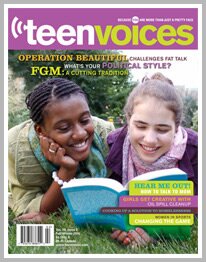

 Who says science fairs have to happen in middle and high school cafeterias and gymnasiums? Especially when Google is involved. Google has just announced its own , in which they’re looking for the brightest, best young scientists from around the world to submit interesting, creative projects that are relevant to the world today. Participation is open to full-time students between the ages 13 – 18 who are enrolled in a private or public school. Home-schooled students are also eligible.
Who says science fairs have to happen in middle and high school cafeterias and gymnasiums? Especially when Google is involved. Google has just announced its own , in which they’re looking for the brightest, best young scientists from around the world to submit interesting, creative projects that are relevant to the world today. Participation is open to full-time students between the ages 13 – 18 who are enrolled in a private or public school. Home-schooled students are also eligible. Hello Smart Girls,
Hello Smart Girls,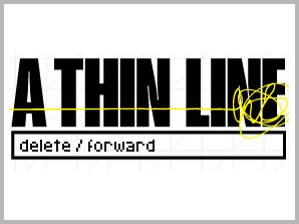 A little more than a year ago,
A little more than a year ago, 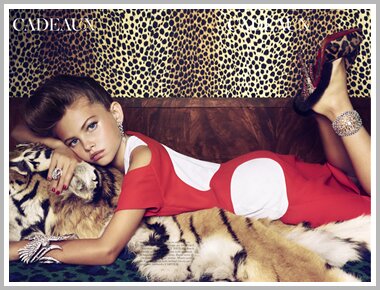 A photo shoot featured in the December issue of
A photo shoot featured in the December issue of 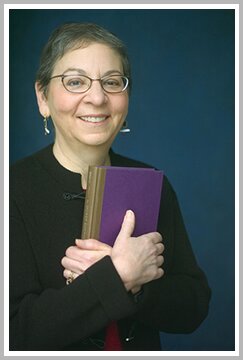 I’m excited to give a special shout out to friend, mentor, and librarian extraordinaire Nancy Pearl, who was just named Librarian of the Year by the
I’m excited to give a special shout out to friend, mentor, and librarian extraordinaire Nancy Pearl, who was just named Librarian of the Year by the 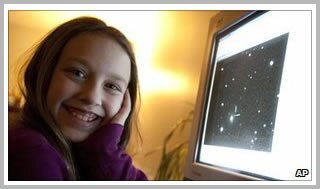 I’m sorry, but how cool is this? Ten-year-old Kathryn Gray from Canada has just become a world-renowned astronomer. How? She became the youngest person ever to discover an exploding star, otherwise known as a supernova.
I’m sorry, but how cool is this? Ten-year-old Kathryn Gray from Canada has just become a world-renowned astronomer. How? She became the youngest person ever to discover an exploding star, otherwise known as a supernova.
